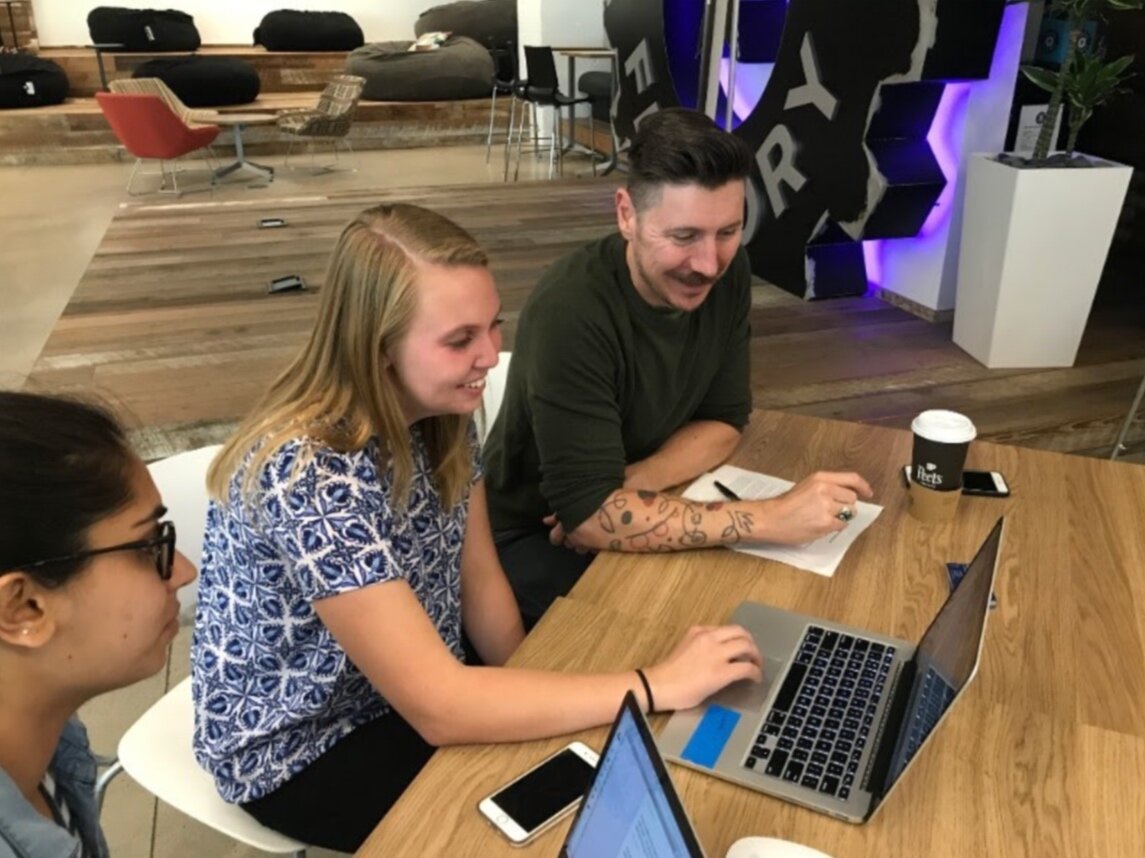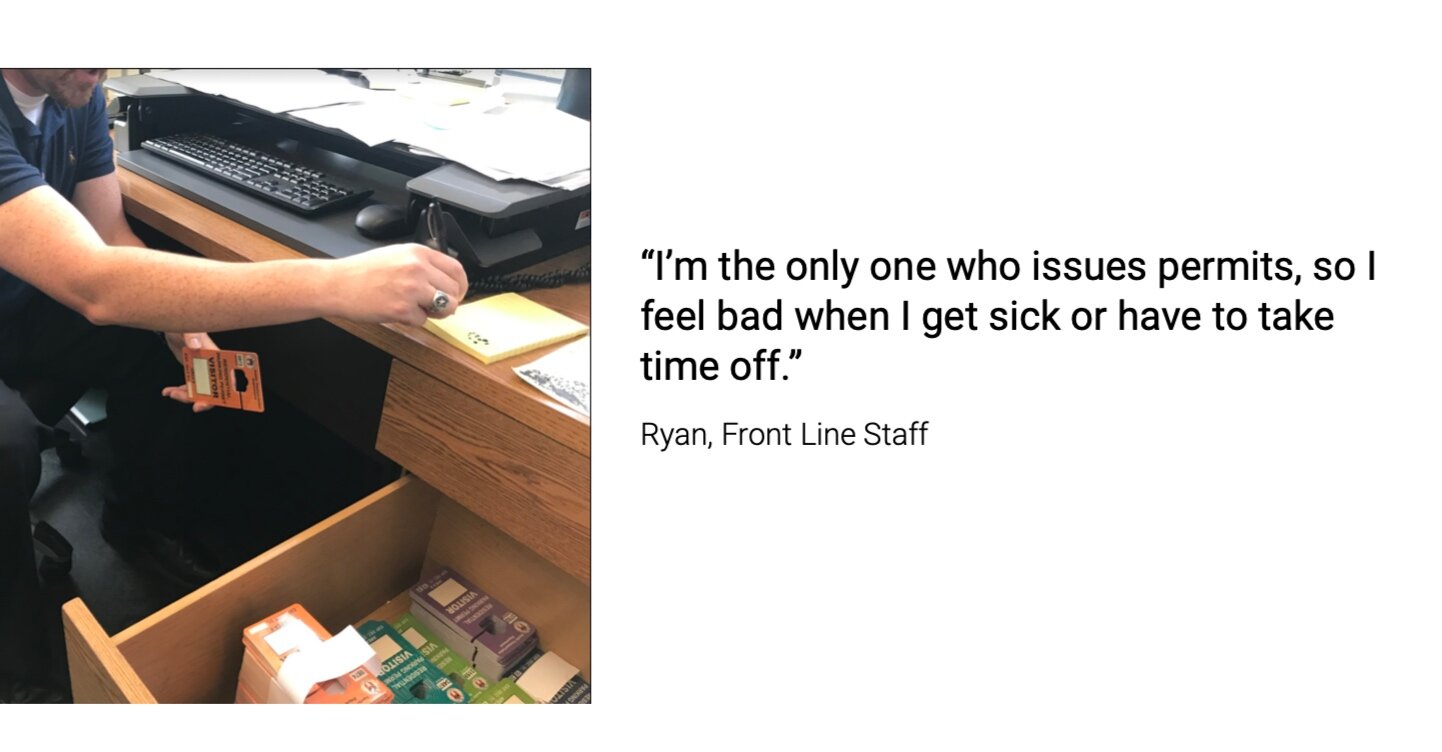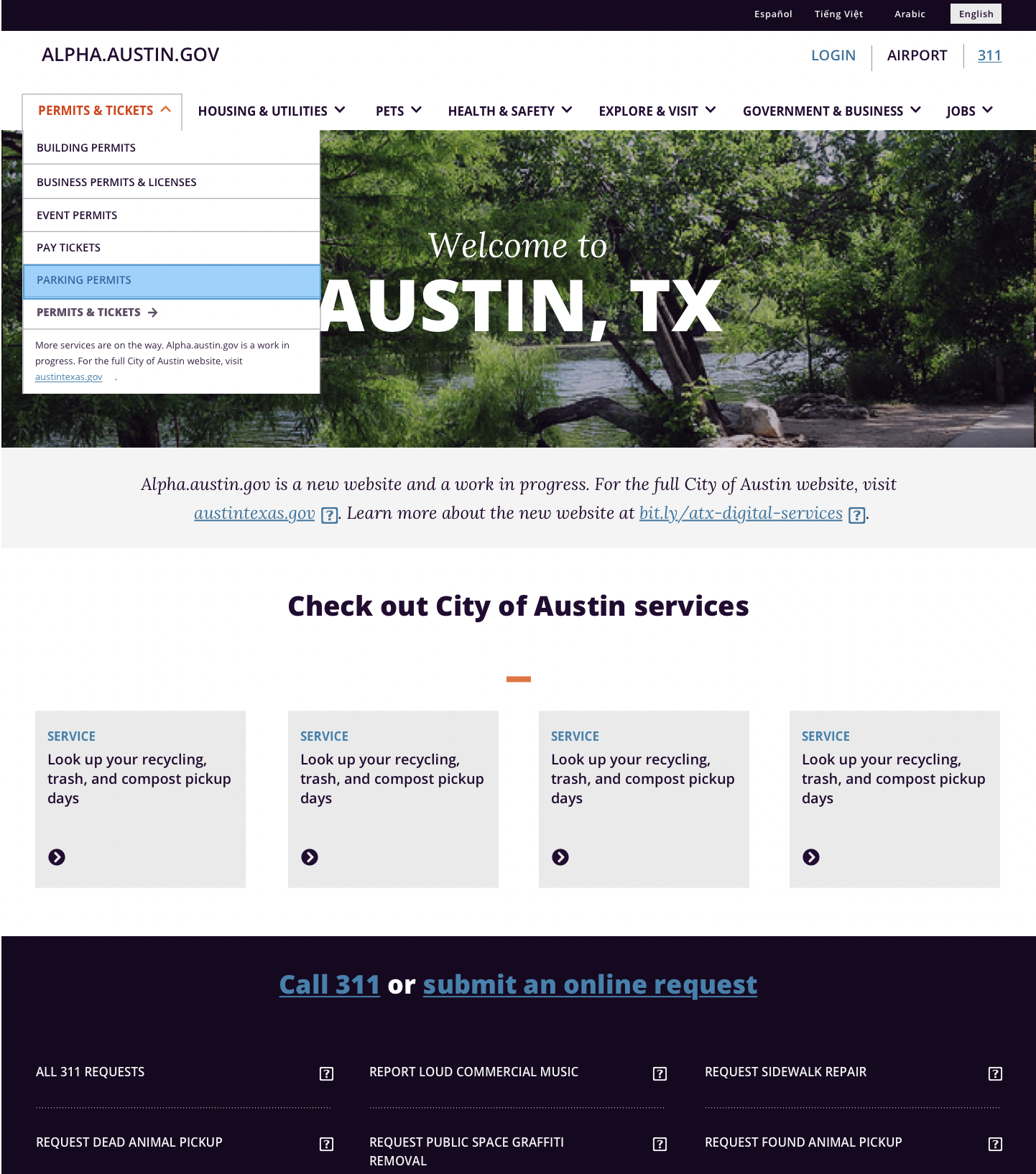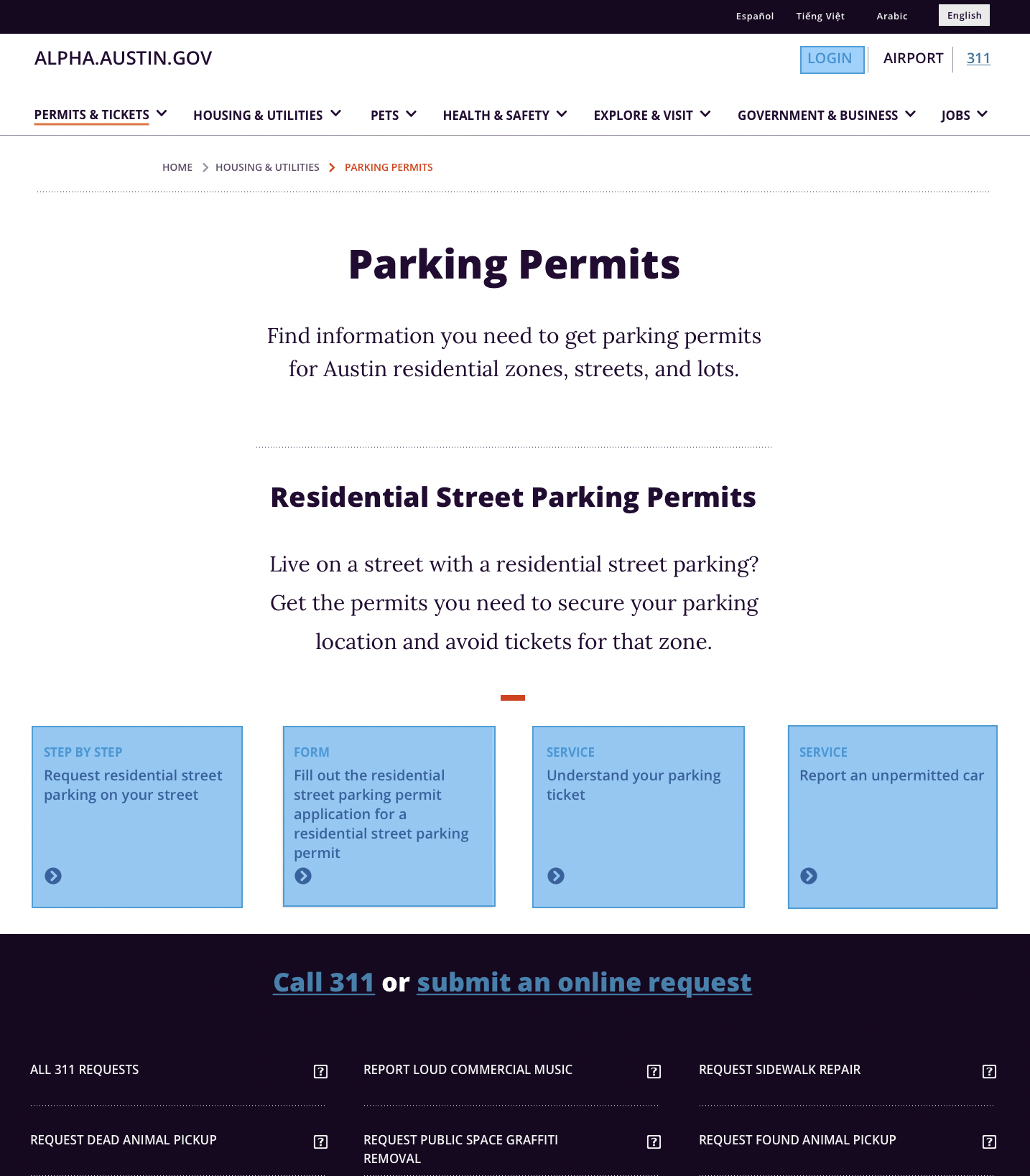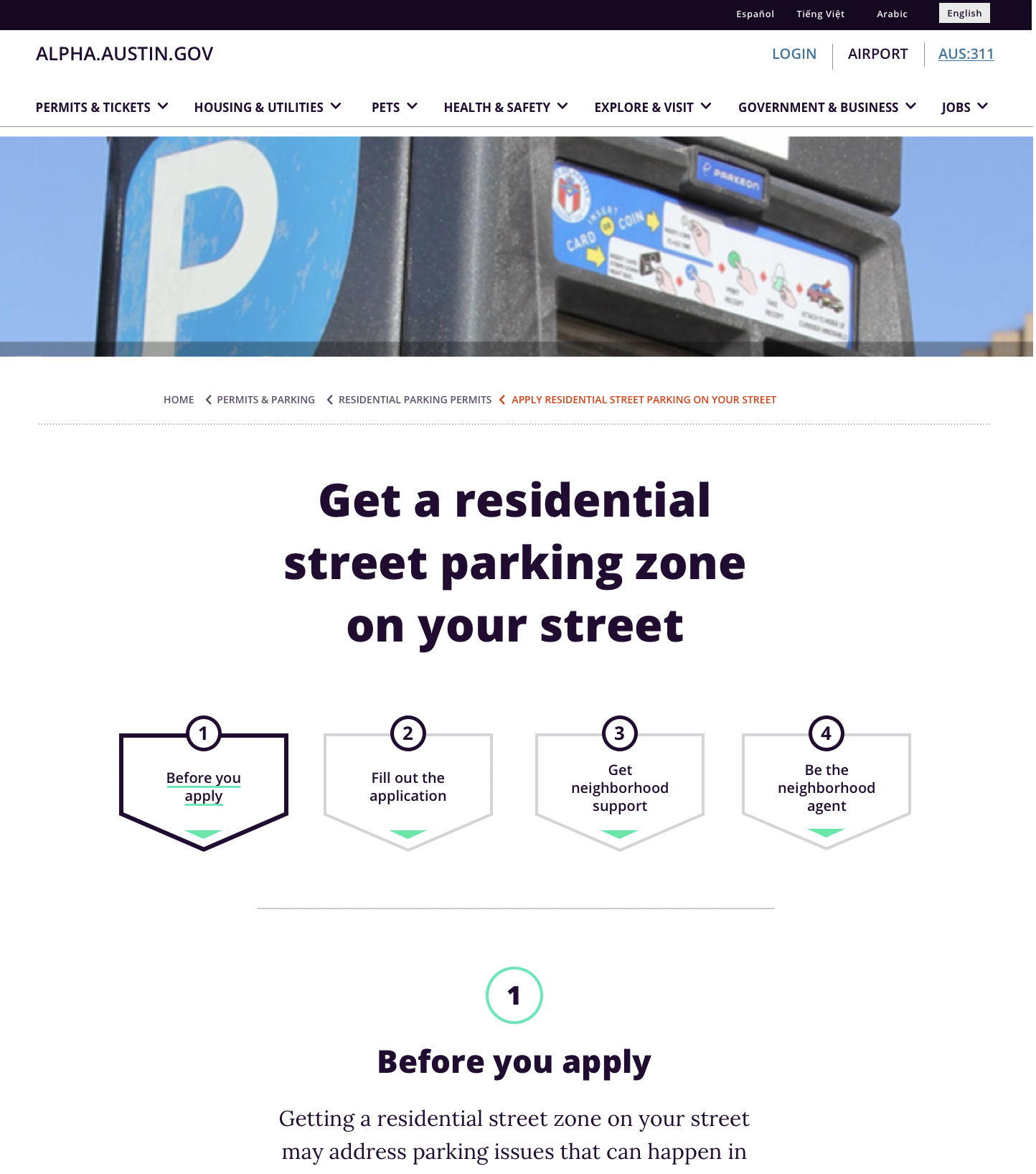Our office, in collaboration with the Austin Transportation Department, worked to understand the current pain points and obstacles Residential parking permitting service providers, enforcement as well as residents face when dealing with zoning and permitting of residential parking. This initiative is a partnership between neighborhoods, the community, government, public safety, researchers, and stakeholder groups. Together we worked to develop innovative ways to deliver permits to residents equitably and efficiently, rather than short-term fixes, because these solutions must be sustainable over time.
Partners: Service Design Lab / Residential Parking (permitting & enforcement) / Austin Traffic Department / Residents
Duration: 6 Weeks
My Role: (Research) Interviews (foundational/usability), Workshop Creation & Facilitation, Synthesis & Ideation of data
Design: Service Blueprint, Wireframes, Interactive Prototype
Tools: Sketch, Invision, Google Docs-Sheets
Website: Residential Permit Parking
Challenge presented: How might we help the Residential Parking Program use existing information to help residents obtain a parking permit more effectively and efficiently?
Our goal: Understand how key information is created, shared and applied by residential parking program to deliver permits to residents & identify opportunities to improve the way that key information is created (i.e. through forms), shared, and applied by the program so we can deliver services to residents more effectively and efficiently
User Interviews
User interviews (foundational & usability) were completed in the field (shadowing). Observing new residents cope with residential parking, enforcement ride-alongs, and permitting workers. Foundational were completed to understand working environment, tools, methods, pain-points and wins. Usability interviews were completed to test a prototype in attempt to see if it met our assumptions in meeting user needs.
Personas
After conducting foundational interviews as well as observing residential parking and enforcement staff in the field, as well as resident interviews sharing their experiences with parking simple personas where created to remind us who was at the table when thinking of needs from the service.
Service Blueprint
I created a service blueprint (sketch) to outline the journey of a resident in need of Residential Parking, noting methods of entry to the system to apply, from online to phone. This journey also demonstrates where the lines of interaction blur and moves into the permit providers hands, or parking enforcements. The good and bad and based on overlapping resident and worker interviews provided pain points that cause disruption within the permitting system.
Research Insights
External frustrations with repetitive, inefficient processes mirror internal frustrations with the same processes.
It’s hard for residents to match their needs to the options available given the lack of clear, accessible information.
Employees spend an inordinate amount of time on manual data entry that could be avoided by using retained info, and capturing user-entered data.
The system is set up to meet the needs of those who have time and money over those who don’t.
“Enforcement is light unless we call in.” - Resident
Information is available, but challenges with capturing and sharing it in a way that’s useful prevents RPP (and others) from functioning in at least a user-friendly, and at most a data driven, way.
It’s hard for residents to match their needs to the options available given the lack of clear, accessible information.
Staff discretion and understaffing leads to inconsistent implementation of policies.
The lack of a central starting point for users adds to backstage complexity for employees .
Recomendations
Online permitting solution presented with wireframes (Sketch) addressing needs from research and presenting them in both static and with actionable prototype. (Demo)
The portal is the central source of information on all things Residential Parking Program Makes it easy for residents to match their needs to the products available
The portal takes advantage of user-entered information to minimize the staff discretion and time necessary to issue permits -this is particularly true with renewals
Employees spend an inordinate amount of time on manual data entry that could be avoided by using retained info, and capturing user-entered data.
Staff discretion and understaffing leads to inconsistent implementation of policies.
The lack of a central starting point for users adds to backstage complexity for employees .
Information is available, but challenges with capturing and sharing it in a way that’s useful prevents RPP (and others) from functioning in at least a user-friendly, and at most a data driven, way.
System wide recommendations
Work to create necessary collaborations on the back-end such as:
Notifying code enforcement when too many people apply for permits from the same unit.
Ensuring people know about construction permits when they get a building permit from a separate city service.
Getting ticket data back from municipal court to more strategically prevent violation tickets.
Create a Collaboration with energy utility to associate utility numbers with their resident database.
Future State Journey Map
Based on the Service blueprint and an ideation workshop session with staff and residents the takeaway was a future state user experience flow , introducing new entry point methods and online portal with resident guidance.
Invision Demo!

